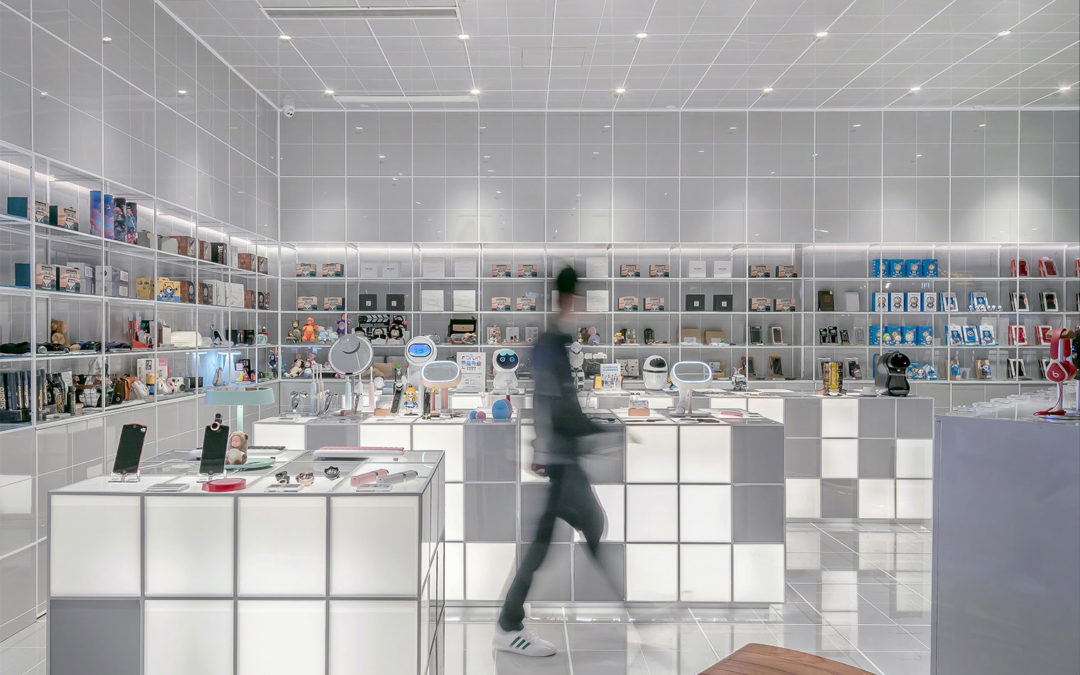
Here’s How Customer Service Will Kill Brick and Mortar Retail
eCommerce baked-in customer service as a standard. Perhaps early innovators recognized its importance as a differentiator from in-store retail, or maybe it came naturally. Regardless, many traditional retail giants chose to ignore it altogether. In the stories that follow, we’ll explore vast disparities in customer service driving traditional retailers toward bankruptcy while simultaneously skyrocketing eCommerce sales.
Good CX Demands Good Customer Service
Major retailers now seemingly compete with airlines, telecoms and power companies for the worst customer service. The key difference, however, is the range of alternatives. Most regions of the U.S. don’t get to pick between more than two horribly aggravating cable providers, while anyone in the world can choose Amazon over local retailer. As a result, the need for retailers to optimize their customer experiences through customer service is paramount. However, those who only recently realized this may be too late.
Jura Live! A Customer Story:
“Jura LIVE! allows customers shopping online to make live video appointments at their convenience, from the comfort of their own home. Customers can see the products in action in real time and leverage the knowledge of a sales rep. to help them make a purchasing decision. For a luxury product such as a super automatic coffee & espresso machine, this adds a significant amount of convenience to the customer’s experience while also dazzling them with high-end technology. These types of high-touch online experiences help the sites that have them dominate those without. Unfortunately, most brick & mortar stores don’t offer these experiences because they refuse to adapt.”
-Dave Gardner, Sr. Account Executive & Team Lead at Redstage
How Retail Heros Became CX Villains
Sears, JC Penney, and Toys “R” Us are known for major missteps that downgraded their in-store experiences and alienated customers. Sears simply stopped investing in its stores. Years ago, company leadership decided to introduce a poorly-managed customer loyalty program that caused much more harm than good. The “Shop Your Way” program caused extended checkout times; both for customers waiting in line behind someone signing up for rewards AND for loyalty members who facing constant discrepancies in “deal” prices at the checkout.
The Fall From Grace
When sales declined, products began to downgrade, the stores themselves fell to disarray, and customers naturally opted for other retailers like Macy’s and Home Depot. As a poorly planned remedy to decreasing sales, Sears chose to cut in-store staff in half across their locations, propelling worsening structural conditions that led to closures all over the U.S. To this day, the company continues to pump products into stores that no one will buy, without the necessary human capital to even unpack them.
A Sears Auto Story
Recenty, Redstage’s CEO Adam Morris had his own customer service blunder at Sears. He entered Sears Auto looking for a particular item, couldn’t find what he wanted, and exited the store only to discover his car had been towed. According to Morris, the towing company contracted by Sears was watching the security cameras while he was inside. Because he parked in a space for “Sears Auto Customers Only,” and hadn’t made a purchase, he wasn’t considered a customer, which allegedly gave the towing company license to tow his car.
In an attempt to get assistance from Sears, Morris spent hours on the phone with a “rude or unhelpful” customer service representatives. At the end of the ordeal, one rep told Morris to file a police report if he felt he was wronged. He had to pay to get his car back — more than the cost of the item he initially intended to buy.
Think he’ll be heading back to Sears anytime soon?
Alienating Your Audience

JC Penney’s downfall came when it decided to switch to “low everyday prices” rather than focusing on their weekly coupon deals — something that created buzz from local customers and drove them to stores. At the same time, JC Penney switched focus from inexpensive products to more upscale merchandise, further alienating their customer base. As a result, shoppers decided to shop elsewhere. For a company founded on a middle class audience and low prices, this change was a signal for lifetime shoppers to exit, with seemingly no plan in place for attracting a higher-paying target audience.
Retail Giants’ Company Value Shift (2006 – 2018)
|
|
2006
|
2016
|
2018
|
06 – ’18
|
|
Company
|
Value ($B)
|
Value ($B)
|
Value ($B)
|
% Change
|
|
Sears
|
$14.3
|
$0.9
|
$0.3
|
-98%
|
|
JCPenney
|
$18.1
|
$1.7
|
$1.2
|
-94%
|
Source: Peter Diamandis, “The Future of Retail“
Know Your Customers (or else)
Toys “R” Us CEO David Brandon mentioned in a recent SEC filing that the toy giant’s inability to invest in customer experiences in-store accelerated the death of the company. Last fall Brandon said the company’s mounting debt caused them to lose their competitive edge “on various fronts, including with regard to general upkeep and the condition of our stores.” In addition to the “general upkeep” Brandon mentions, if you’ve walked into a Toys “R” Us outside of the holidays, you’d understand. The massive store would appear as a moonscape, cold and nearly lifeless, save one or two employees and some barely audible music. Is that the environment that makes kids and parents think of fun?
This blog post does an excellent job of describing how Toys “R” Us could have boosted their customer experience through the roof, and honestly, it was probably within reach. “Special store events could include Nerf gun battles and dress up contests. Store representatives could excel at providing toy recommendations for particular age groups and interests (ever wondered, “What the heck do a get for my 8-year-old niece for Christmas?”).” These are the customer service based experiences consumers expect in our high-touch world. With eCommerce personalizing every customer interaction, it’s no wonder retail’s value continues to diminish.
Here’s Why Retail Will Die
As we can interpret from the examples above, traditional retail’s refusal to adapt (or perhaps retail’s lack of understanding about eCommerce) will be the industry’s ultimate downfall. One-time giants like Sears are ignoring systemic issues that directly impact in-store and over-the-phone customer experiences. Customer-minded marketing, store upkeep, and customer service — once staples of the retail experience — are being outsourced, downgraded or eliminated.
How To Bring The Magic Back

In a last-ditch effort to get customer engagement, Toys “R” Us launched an AR app called “PlayChaser” to create gamified in-store experiences. There were a few issues with this, like parents who didn’t want their kids running around a massive store with their tablet — and also the fact that the company had already declared bankruptcy — but the intent was there. Toys “R” Us was ready to repent for decades of customer boredom, but it was too-little-too-late.
Retailers seeking a strong, successful revival need three things:
- A unified strategy that blends digital and physical experiences while thinking realistically about in-store capabilities (like employees, upkeep, and tech).
- A highly-tailored online experience that combines hardcore marketing tactics with artificial intelligence to boost customer retention & sales (watch video).
- Unrelenting customer service that makes everything easier for the customer (yes, we mean everything). Understand your customers and meet their demands.
Final Thoughts
Circuit City recently announced an ambitious plan to resurrect the company with an eCommerce focus and an impressively cool omnichannel strategy. The digital retailer relaunched February 15th and is moving forward rapidly. If Circuit City can make a comeback, maybe it’s time for other retailers to get with the program.



Recent Comments